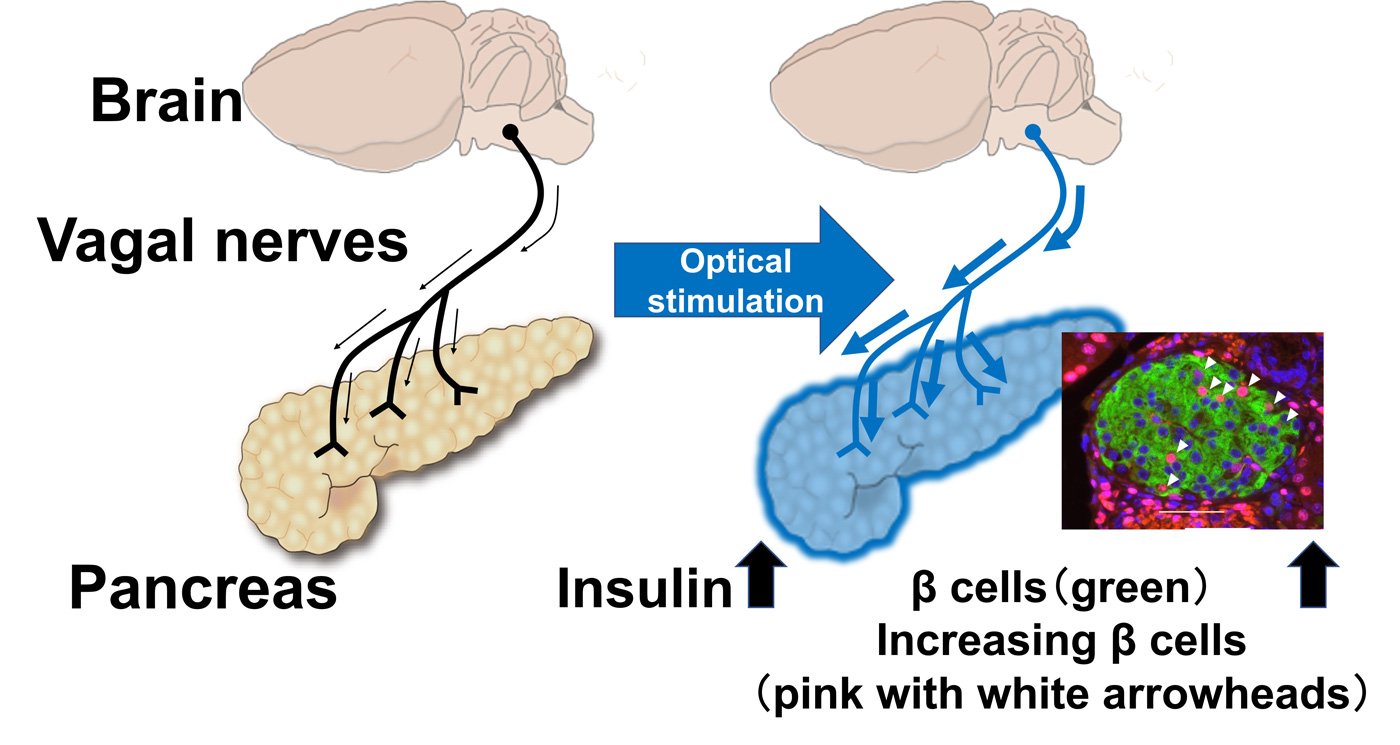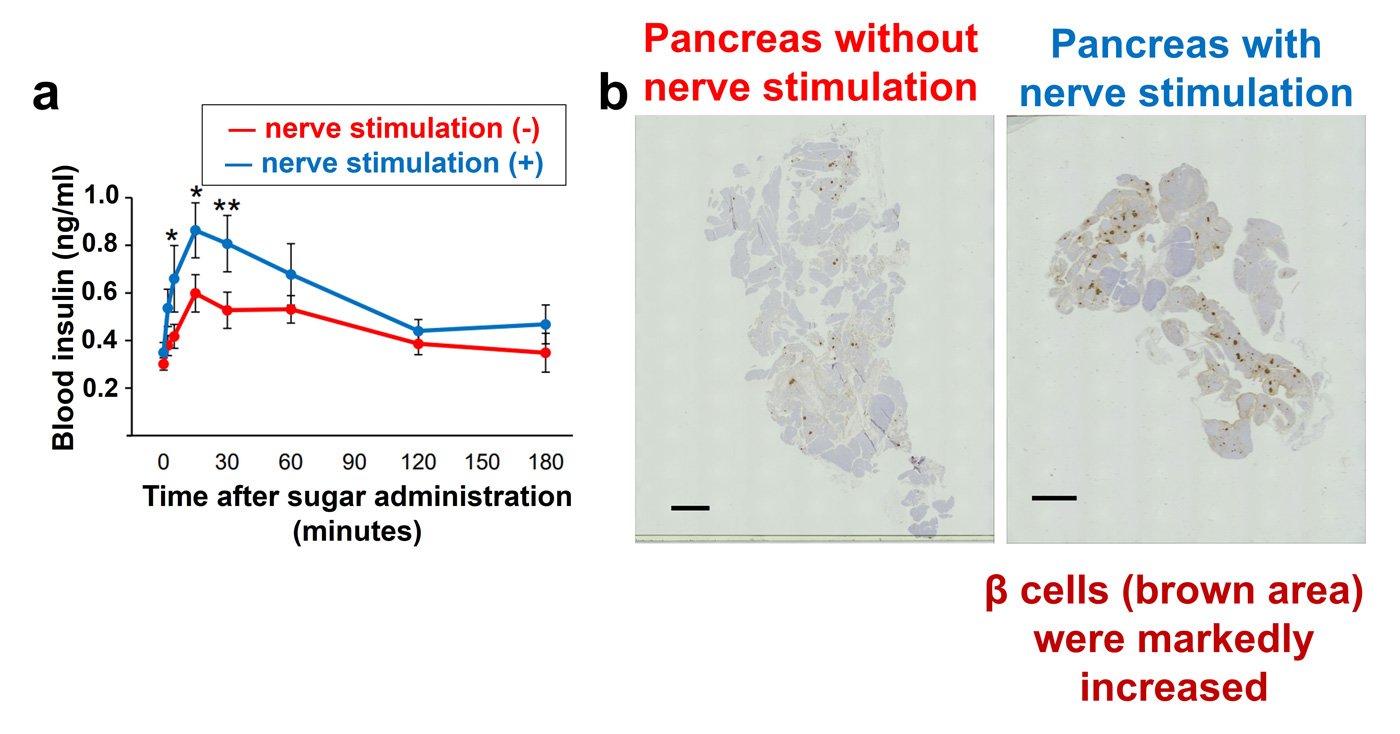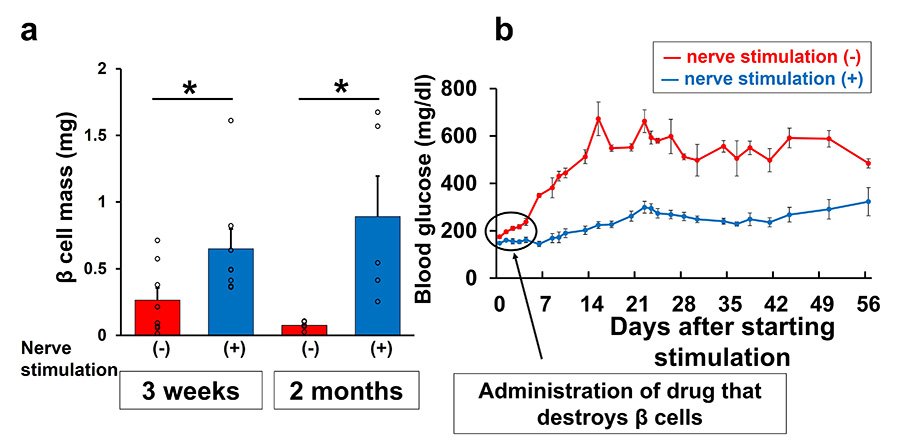Insulin is a hormone that decreases blood glucose levels. The only cells that produce insulin are pancreatic beta cells (β-cells), and a decrease in these cells is a major cause of diabetes. Although therapies aimed at increasing pancreatic β-cells are eagerly awaited, a strategy that can increase β-cells has, thus far, not been developed.
In a promising development, a research group has revealed that stimulating autonomic vagal nerves connected to the pancreas can improve the function and also increase the number of pancreatic β-cells in mice.
The group, which was led by Associate Professor Junta Imai, Assistant Professor Yohei Kawana, and Professor Hideki Katagiri from the Tohoku University Graduate School of Medicine, published their findings in the international scientific journal Nature Biomedical Engineering on November 9, 2023.
“Using optogenetics, we first developed a means to stimulate individually the vagus nerve leading to the pancreas in mice,” says Imai. “This novel method led to a marked elevation in the amount of insulin in the blood when sugar was administered, indicating improved β-cell function.”

Additional stimulation of this nerve over two weeks more than doubled the original number of β-cells. Stimulating the pancreatic vagal nerves activated β-cells in terms of both quality and quantity.
When Imai and his colleagues applied this method to a mouse model of insulin-deficient diabetes, the regeneration of pancreatic β-cells ameliorated diabetes in these mice. This represents the first successful treatment of diabetes in mice by stimulating the vagal nerves connected to the pancreas.

“We hope our achievements lead to the development of new strategies and preventive methods for diabetes,” adds Imai. “We also expect it to advance our understanding of the mechanisms that regulate the function and number of pancreatic β-cells, as well as the causes of diabetes.”
The research in the project was supported by the Japan Science and Technology Agency (JST), [Moonshot R&D] as well as by the Japan Agency for Medical Research and Development (AMED-PRIME).

- Publication Details:
Title: Optogenetic stimulation of vagal nerves for enhanced glucose-stimulated insulin secretion and β cell proliferation
Authors: Yohei Kawana, Junta Imai*, Yosuke M. Morizawa, Yoko Ikoma, Masato Kohata, Hiroshi Komamura, Toshihiro Sato, Tomohito Izumi, Junpei Yamamoto, Akira Endo, Hiroto Sugawara, Haremaru Kubo, Shinichiro Hosaka, Yuichiro Munakata, Yoichiro Asai, Shinjiro Kodama, Kei Takahashi, Keizo Kaneko, Shojiro Sawada, Tetsuya Yamada, Akira Ito, Kuniyasu Niizuma, Teiji Tominaga, Akihiro Yamanaka, Ko Matsui and Hideki Katagiri
Journal: Nature Biomedical Engineering
DOI:






